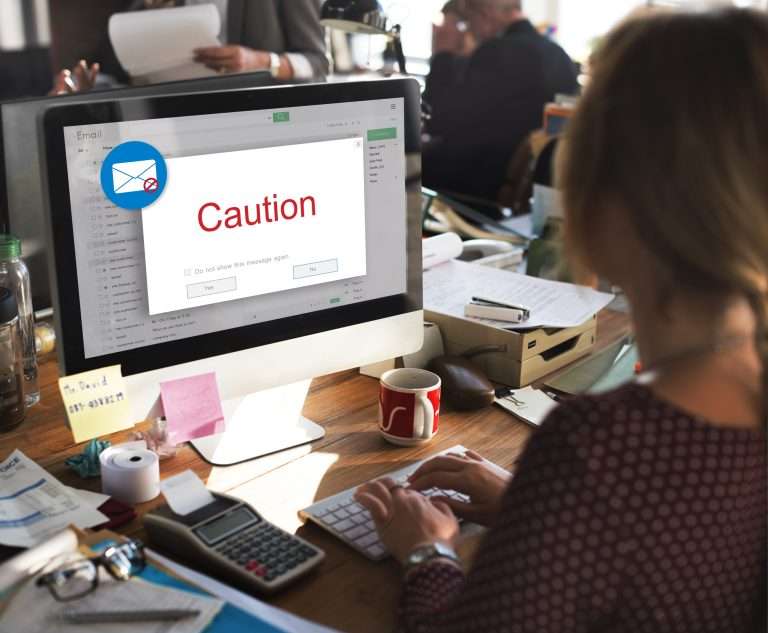These days computer viruses and spyware are as bountiful as stars in the night sky. They’re everywhere are some pose serious threats to not just your computer but your files and private data as well. In addition to that the majority of viruses and trojans can be spread to other computers without you even knowing that your computer is infected. The good news is that like biological viruses, computer infections can be kept and bay and can be destroyed using the proper “medicines”.
There are, much like real life diseases many misconceptions and misunderstandings surrounding computer viruses and spware. I would like to take this opportunity to help you the reader, discern fact from fiction.
Different types of threats.
- Virus – Essentially a computer virus is a program that is designed to disrupt the operation of your PC and/or network and in more severe instances can be programed to steal data, corrupt important files, and can make you computers performance sluggish, In addition, most computer viruses replicate themselves without your permission or knowledge. Though the term “virus” is often used erroneously in reference to many different types of malware, a true virus can only spread to another computer when it is delivered via email, or portable media such as a CD, floppy disk, etc.
- Malware – Malware is particularly dangerous because it is designed to break into your computer or network and damage both files and data. More often than not when an individual becomes infected with Malware they refer to it as a computer virus which is of course incorrect. Malware generally contains such things as Trojans, Worms, and other programs that open a back door to your computer which in turn, allows individuals to view, plant, and steal files and personal data. More recently however Malware has been created by unscrupulous individuals whose purpose is to take control of your computer and profit from it on the black market. Allowing Malware to remain in a computer can give permissions to those who will exploit your machine and use it to send out spam email, and in some cased host contraband.
- Spyware – Spyware is the main culprit behind all of those pop ups we all love so much and is installed surreptitiously on your computer and or network. Visiting certain sites can allow spyware to be installed without you ever knowing it. Many adult sites and sites that offer “free” things often contain spyware. Generally speaking most spyware is designed to collect data from you, mainly your browsing habits so that pop up’s can be generated that might be of interest to you. Spyware can also behave intrusively as it can interfere with the installation of software, can install it’s own 3rd party software, and open up your computer to much more harmful things such as malware and viruses. In some extreme cases spyware can actually affect the speed of both your computer as well as your Internet connection. Computers with a multitude of add on tool bars installed into their browsers is usually a good sign of infection.
- Adware – Adware is software that is packaged in with legitimate computer programs. As time goes on this type of advertising is being challenged by consumers and the law as many types of Adware actually functions just like spyware in that it collects data on your browsing habits and computer usage without you ever being aware that it’s happening. This data then is sent to a 3rd party organization. Many companies use Adware as alternative to requiring payment for a program or service. Be wary of free programs or shareware software.
It is typical for the average computer to contain infections of one or more of the above threats at all times. Though the majority of these threats are easily removed using antivirus and antispyware software, infections tend to return during the browsing session immediately following the clean up process. Casual Internet users and even businesses should expect to battle these threats on a daily basis and should never expect their computers to be infection free. In addition while most of the common infections we’re all exposed to are in fact low on the threat scale these things as previously stated can eat up a computers resources and leave it severely compromised which if left unattended can slow down a computer drastically to the point where a computer may have difficulty booting up.
So now you’re asking yourself what can I do to combat these types of infections and keep my computers performance running at optimal speed? Well there are several antispyware and antivirus programs that are currently offered as free downloads. Our advice would be to utilize both tools on a daily basis to ensure you keep infections and problems to a minimum. All are free and easy to update and use.
Spybot – This tool detects and removes spyware and malware. It also removes trojans and worms too.
Ad Aware – This program sniffs out spyware, malware, and the occasional virus. There are times where this program is more beneficial than a big name antivirus program.
In addition to these two programs Windows Vista users have access to Windows Defender. Windows Defender is an excellent intrusion prevention tool and can help cut down the amount of garbage that can find its way onto your computer so we recommend you have that running at all times. XP users do not have this tool but may use other types of programs from various vendors to help eliminate threats.
Computer threats and infections can often cause confusion, frustration, and can put a halt to your work. Here are some simple questions and answers to help you better understand how threats behave.
Q. I received a virus after visiting a specific site. Did this site download it into my computer?
A. Though most sites do not carry any kind of “virus” and are not malicious in nature, many sites, especially those offering free downloads and adult content more often than not should not be visited solely because those sites lure visitors with the false promise of free download and/or content and then secretly infect your computer. Trusted sites such as banks, informational websites and even web hosts and providers do not intentionally upload anything into your computer and or network.
Q. Who puts these viruses on websites?
A. Those who intend to steal your data, disable your computer, or those who want to manipulate your PC do. They build websites that at first glance look attractive and promising and then upon visiting such a site deliver spyware and malware into your computer without you ever knowing.
Q. Does Cal Coast Web Design use any type of Adware in it’s or it’s clients websites?
A. No. Cal Coast Web Design stands firmly against these types of intrusion mechanisms and supports laws against such things. Cal Coast Web Design regularly runs top notch antivirus tools which scan its servers for any possible threats. In addition Cal Coast also utilizes several excellent intrusion prevention tools so that these types of things don’t make their way to the servers were your websites are hosted.
Q. Can I get a virus from uploading or downloading information from my web hosts servers?
A. Uploading files would allow you to deliver damaging files to your web host but as all web hosts run intrusion prevention tools that stop virtually all incoming threats your attempt to upload these either knowingly or unknowingly would be halted. If a server was infected with some type of virus then yes you could download something harmful to your computer. You will want to keep in mind however that once again any legitimate business will not risk infection and disruption of the service they provide you with so it’s very unlikely that you will ever receive something harmful from a web hosting company or any legitimate business for that matter.
Q. Why does my computer tell me that I have been infected just after visiting a website or downloading something via FTP?
A. In some cases you may actually have a serious infection, in other cases the threat being detected may have been flagged as dangerous by an overprotective antivirus program you’re running. As most users generally don’t toy with the settings in their antivirus programs things like simple pictures and even text and word documents can end up getting flagged. Other times your antivirus program will alert you of an infection and it will turn out to be a cookie that a website has stored on your computer. It is important for this reason that at the end of every day you clear out your temporary Internet files (also known as your cache) so that when running an antivirus or spyware scan these don’t get detected. Most cookies are harmless and useful, however it’s once again a matter of which websites you have visited. Check the settings in all of your PC protection software and try turning down the level of security it provides and see if that stops the alerts you’ve been receiving. If that doesn’t help simply clear your cache and then run a system scan with both of the tools listed above. That should get rid of the problem.
Q. Is it safe to work or use my computer while my it’s infected?
A. While doing virtually anything on the Internet these days guarantees some type of infection (remember useful cookies?) you should run system scans once a day to clear any potentially harmful threats from your system. Be prepared to find that you’re always infected with something even if you run system scans on a regular basis. You needn’t worry to much however as not all infections are dangerous and running your antivirus scans should provide you information on the threat level of the infection to help you become more familiar and comfortable with certain types of cookies etc. Unless your computer is running extremely slow and you plan on taking care of some online banking, or using a credit card it should be relatively safe for you to perform normal casual and work related tasks on your computer.
The bottom line is that your computer should receive daily maintenance in the form of cache clearing and virus scans from at least one antivirus application. You also need to keep in mind that applications with high security settings will cause you to receive alerts from time to time when it finds a picture, document, or cookie that looks suspicious, even if you know it to be safe. Addressing these three needs on a daily basis will help prevent both infections and annoying and sometimes scary threat alerts.
We hope that this gives you a deeper understanding of the how’s why’s where’s and when’s of computer threats. Should you have any lingering questions or comments please contact us so that we can help!



